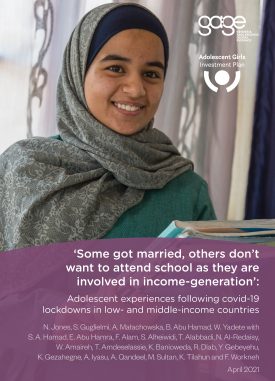Investing in adolescent girls can bring significant returns. There are currently 1.8 billion young people between the ages of 10 and 24 years globally, and most of them (90%) live in developing countries. Adolescents as a group have also been neglected historically within policy and programming and there is still limited overarching evidence on the state of financial investments in adolescent girls. In order to bridge this gap, this research study has mapped investments into adolescent girls to examine what investments there are and how funds are distributed. In this report, we present findings from this mapping exercise undertaken at the global and country levels (Ethiopia and Bangladesh), drawing on published data on donor official development assistance (ODA) flows complemented by key informant interviews with donors. Considering the large adolescent and youth populations in many LMICs today (ranging from 25%-30%), the percentage spent on adolescents and youth (5.56%), in 2020 still remains low. We found that the distribution of ODA is also highly unequal; some sectors receive the majority of this funding and marginalised adolescents, such as adolescents with disabilities, have been, and continue to be, left behind. There is a strong need to increase and accelerate investments in the most marginalised adolescents, in line with the SDG commitments and the leave no-one behind agenda.
Suggested citation
Devonald, M., Guglielmi, S. and Jones, N. (2023). Investing in adolescent girls: mapping global and national funding patterns from 2016 – 2020. Report. London: Gender and Adolescence: Global Evidence (https://www.gage.odi.org/publication/investing-in-adolescent-girls-mapping-global-and-national-funding-patterns-from-2016-2020/)


